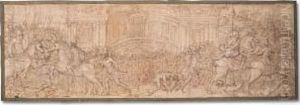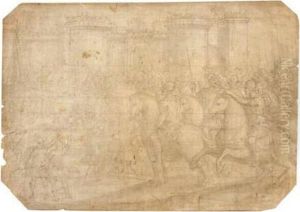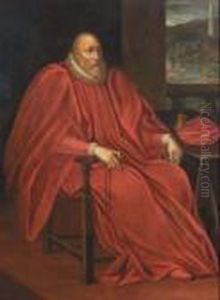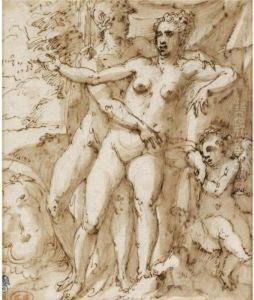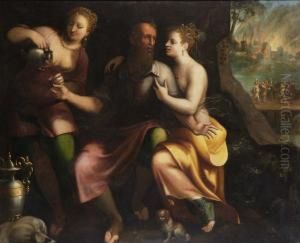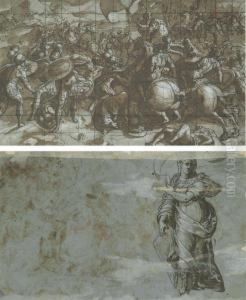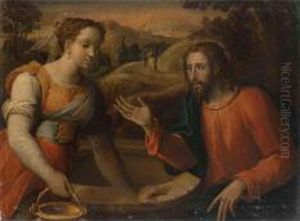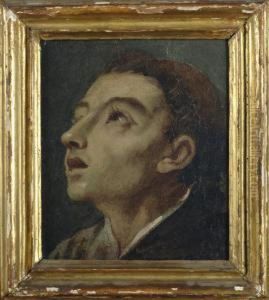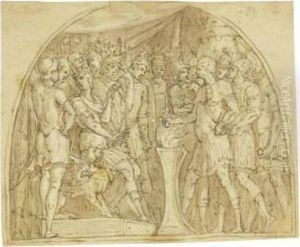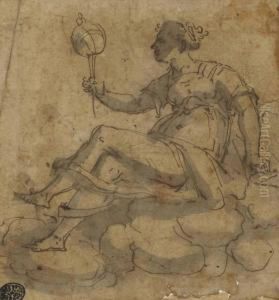Andrea Semino Paintings
Andrea Semino was an Italian painter and draughtsman active during the Renaissance period, primarily within the Republic of Genoa. Born in Genoa in 1526, Semino emerged as a significant figure in the Genoese art scene, contributing to the stylistic transition between the High Renaissance and Mannerism in the region. His work is characterized by its delicate execution, attention to detail, and the influence of both local and foreign artistic traditions.
Semino was initially trained in the workshop of Perin del Vaga, one of the leading figures of Roman Mannerism, who had taken up residence in Genoa. This early exposure to Mannerist aesthetics profoundly influenced Semino's stylistic development. He absorbed the elegant stylizations and complex compositions typical of Mannerism, which he would later adapt and blend with the more naturalistic tendencies of the Genoese tradition.
Throughout his career, Semino was renowned for his religious compositions, altarpieces, and fresco work. His contributions to the decoration of various churches and palaces in Genoa and its surroundings are particularly notable. Among his most celebrated works are the frescoes in the Palazzo Grimaldi and the church of Santa Maria Assunta in Carignano, which showcase his mastery of both narrative and decorative painting.
Despite his accomplishments, Andrea Semino remained somewhat overshadowed by more prominent contemporaries and successors. However, recent scholarship has begun to reassess his role and significance within the Genoese Renaissance, highlighting his contributions to the development of local artistic identity and his influence on subsequent generations of painters.
Semino's legacy is also marked by his role as a teacher. He nurtured the talents of several important Genoese artists, thereby ensuring the continuity of the city's artistic tradition into the late Renaissance and beyond. Andrea Semino passed away in Genoa in 1594, leaving behind a body of work that, while not as widely recognized as that of some of his peers, significantly enriched the cultural and artistic landscape of Genoa during a pivotal period in its history.
